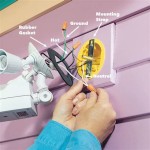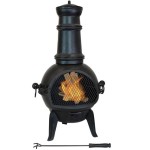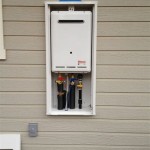Handrails For Steps Outdoors: A Comprehensive Guide
Outdoor steps, while functional and necessary for navigating changes in elevation around a property, can present a safety hazard, especially for individuals with mobility challenges, young children, and the elderly. The addition of handrails significantly mitigates these risks, providing stability and support for users as they ascend or descend. This article delves into the various aspects of outdoor handrails for steps, encompassing materials, design considerations, installation practices, and relevant safety codes.
The primary function of an outdoor handrail is to provide a secure gripping surface that assists individuals in maintaining balance and preventing falls. Beyond safety, handrails can enhance the aesthetic appeal of a property, complementing the existing architecture and landscaping. Selecting the appropriate handrail requires careful consideration of several factors, including durability, weather resistance, style, and ease of installation. Furthermore, adherence to local building codes and accessibility standards is crucial to ensure compliance and user safety.
Key Materials Used in Outdoor Handrails
The choice of material for outdoor handrails profoundly impacts their longevity, maintenance requirements, and overall appearance. Several materials are commonly employed, each possessing distinct advantages and disadvantages.
Wood: Wood offers a classic and aesthetically pleasing option for outdoor handrails. Common wood species used include redwood, cedar, and pressure-treated lumber. Redwood and cedar are naturally resistant to decay and insect infestation, while pressure-treated lumber undergoes a chemical process to enhance its resistance to these elements. Wood handrails can be stained or painted to match the surrounding environment. However, wood requires regular maintenance, including sealing or painting, to prevent warping, cracking, and rot. This maintenance schedule can become relatively labor intensive over time.
Metal: Metal handrails, particularly those constructed from aluminum or stainless steel, offer superior durability and require minimal maintenance. Aluminum is lightweight, corrosion-resistant, and can be powder-coated in a variety of colors. Stainless steel provides exceptional strength and a sleek, modern appearance, although it can be more expensive than aluminum. Iron is another metal option, known for its sturdiness and ornamental potential. However, iron is susceptible to rust and requires regular painting or sealing to prevent corrosion. Metal handrails are generally more expensive upfront but offer long-term value due to their durability.
Composite Materials: Composite materials represent a blend of wood fibers and plastic polymers. They offer the look of wood without the associated maintenance requirements. Composite handrails are resistant to moisture, insects, and rot. They do not require painting or staining and are generally easy to clean. The price of composite materials can often fall in between those of metal and wood varieties, making them a popular choice. However, some composite materials may fade or become brittle over time, particularly when exposed to direct sunlight.
Vinyl: Vinyl handrails are a low-maintenance alternative that is resistant to weathering, insects, and rot. They are available in a range of colors and styles and are relatively easy to install. Vinyl handrails are generally less expensive than metal or composite options. However, they may not be as structurally strong as other materials and can become brittle or warp in extreme temperatures. The aesthetic appeal of vinyl can also be perceived as less sophisticated when compared to wood or metal.
Essential Design Considerations for Handrail Installation
Designing and installing outdoor handrails requires careful attention to detail to ensure safety, accessibility, and compliance with relevant codes. Several key design considerations must be addressed.
Height and Grip: Handrail height is a critical safety factor. Most building codes specify a handrail height of between 34 and 38 inches, measured vertically from the stair nosing to the top gripping surface of the handrail. The gripping surface should be continuous and easily grasped, typically with a diameter of 1.25 to 2 inches for circular handrails or a similar dimension for non-circular profiles. Clearances between the handrail and any adjacent walls or surfaces must also meet code requirements to prevent pinching or obstructions.
Extent and Continuity: Handrails should extend beyond the top and bottom steps to provide a secure grip before and after traversing the steps. The extension length typically ranges from 12 to 18 inches, depending on local codes and the specific site conditions. Handrails should be continuous for the entire length of the staircase, without any interruptions or abrupt changes in height. This ensures a consistent and reliable gripping surface for users. If a landing is involved, the handrail should continue along the landing as well, possibly with a small level section before continuing down any subsequent steps.
Structural Integrity: The structural integrity of the handrail system is paramount for safety. The handrail and its supporting posts must be able to withstand significant loads and forces. Posts should be securely anchored to the steps or adjacent structures, using appropriate hardware and fasteners. The spacing between posts should be sufficient to prevent excessive deflection or sagging of the handrail. A structural engineer may be consulted to determine the appropriate post spacing and anchoring methods, particularly for complex staircases or areas with high wind loads.
Accessibility: Compliance with the Americans with Disabilities Act (ADA) guidelines is essential for ensuring accessibility for individuals with disabilities. ADA standards specify requirements for handrail height, grip size, extension length, and clearance. Handrails must be graspable and continuous, without any obstructions or abrupt changes in height. The space between the handrail and any adjacent walls must be sufficient to accommodate users with mobility aids. Consideration should be made for both rise and run of the steps themselves.
Installation Techniques and Safety Best Practices
Proper installation is crucial for ensuring the safety and longevity of outdoor handrails. Adhering to established installation techniques and safety best practices is essential.
Planning and Preparation: Before commencing installation, a thorough site assessment should be conducted to identify any potential obstacles or challenges. Accurate measurements should be taken to determine the required length of the handrail and the spacing between posts. All necessary tools and materials should be gathered and organized. Local building codes and permit requirements should be reviewed and complied with.
Post Installation: The installation of posts is a critical step that directly impacts the structural integrity of the handrail system. Posts should be securely anchored to the steps or adjacent structures using appropriate hardware and fasteners. Concrete footings may be required for posts that are not directly attached to the steps. The depth and diameter of the footings should be determined based on local soil conditions and building code requirements. Posts should be plumb and aligned to ensure a consistent and aesthetically pleasing appearance.
Handrail Attachment: The handrail should be securely attached to the posts using appropriate brackets or fasteners. The attachment method should be chosen based on the type of handrail material and the design of the post. For metal handrails, welding or bolting may be used. For wood handrails, screws or bolts are typically used. The fasteners should be corrosion-resistant to prevent deterioration over time. The handrail should be level and continuous, without any gaps or irregularities.
Safety Precautions: Safety should be a primary concern during the installation process. Appropriate personal protective equipment (PPE), such as safety glasses, gloves, and a dust mask, should be worn at all times. Power tools should be used with caution and in accordance with the manufacturer's instructions. Scaffolding or ladders should be used when working at heights, ensuring they are stable and properly positioned. A second person should be present to assist with lifting and securing heavy materials. Electrical hazards should be identified and avoided. Marking out work zones can also help to reduce the risk of incidents during installation.
Inspecting the Completed Installation: After completing the installation, a thorough inspection should be conducted to ensure that the handrail system is structurally sound and meets all applicable code requirements. The handrail should be checked for stability, levelness, and continuity. All fasteners should be tightened and secured. Any sharp edges or potential hazards should be addressed. The completed installation should be tested to ensure that it can withstand the anticipated loads and forces. This scrutiny ensures that the installed handrail will provide the required safety and support for users.
Selecting, designing, and installing outdoor handrails requires a comprehensive understanding of materials, design principles, and installation techniques. By carefully considering these factors and adhering to relevant codes and safety standards, individuals can create a safe and accessible outdoor environment for themselves and others.

Vevor Outdoor Stair Railing Fits For 3 To 4 Steps Adjustable Exterior Wrought Iron Handrail Tzfgzxslzfsd4jwfnv0 The Home Depot

Vevor 5 Ft Outdoor Stair Railing Fits 4 Steps Adjustable Angle Aluminum Handrails For Black Snlzslzygl5ft1gtpv0 The Home Depot

Vevor 5 Ft Outdoor Stair Railing Fits 4 Steps Adjustable Angle Aluminum Handrails For White Snlzslzygl5ftpdubv0 The Home Depot

Zimtown Handrail For Stairs Fits 2 Or 3 Steps Outdoor Stair Railing Picket Black Wrought Iron 38 Com

Vevor 3 Ft Handrails For Outdoor Steps Fit Or 4 Stair Railing Wrought Iron Handrail With Baer White Ltfs3h4bbstl00001v0 The Home Depot

13 Diy Outdoor Stair Railing Ideas Simplified Building

14 Outdoor Handrail Ideas To Enhance Your Home Simplified Building

Handrails For Outdoor Steps Fit 1 Or 2 Stair Railing Wrought Iron Handrail Adjustable Front Porch Hand Rail Black Transitional Railings Concrete Wooden Stairs Com

Simple Exterior Handrail For Less Than 100 6 Steps With S Instructables

4 Step Handrails For Outdoor Steps Fit 3 Or Stair Railing Concrete White Wrought Iron Exterior Hand Adjustable Metal Rails Deck








